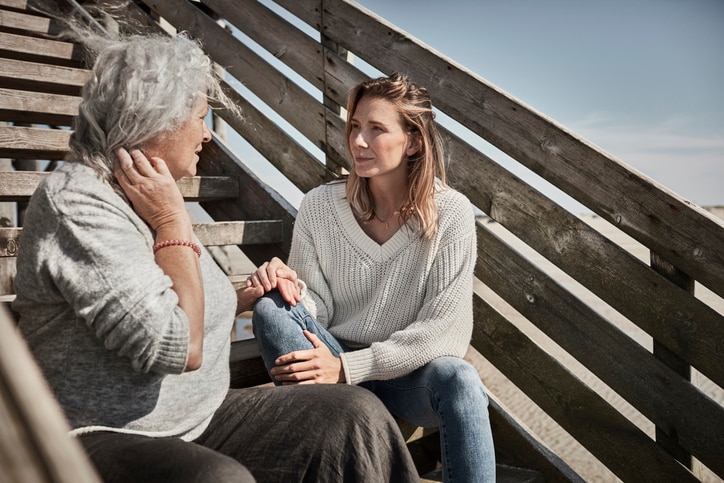In this article
Considering assisted living as a long-term care option for an older adult in your life who is struggling to continue living solo, or for yourself in the future? Assisted living facilities all share the common goal of maximizing independence through personalized care. But individual communities often have their own eligibility requirements to help ensure every resident gets the care they need, explains Grace Ferri, chief marketing officer at United Hebrew of New Rochelle, a senior living community in New Rochelle, New York.
“Assisted living facilities offer a balance between independence and support, allowing residents to maintain their quality of life while receiving the help they need,” Ferri says. “Understanding requirements and assessment processes is important for families who want to ensure a smooth transition to an appropriate level of care for their loved one.”
Here, experts explain who qualifies for assisted living facility, common requirements for seniors and how new residents are assessed to ensure a good living situation.
Key takeaways
- Who qualifies for assisted living depends on their ability to live semi-independently and their need for personal — not intensive medical — care.
- Eligibility is assessed through evaluations of mobility, cognition, medical needs and how well the facility can meet those needs.
- Start your search early, visit multiple communities and compare offerings to find the best match for your loved one’s needs and preferences.
Who qualifies for assisted living?
In general, according to the National Center for Assisted Living (NCAL), assisted living communities serve individuals who need help with activities of daily living (ADLs) and some health care services but do not require 24-hour ongoing skilled nursing care services. Read on to learn about the requirements and qualifications that generally define who is well-suited for assisted living.
Find assisted living communities
Someone who is independent but needs personal care assistance
While assisted living residents have access to different levels of care services, typically they must be able to live on their own, Ferri notes. “By design, assisted living is for individuals who can live independently but require some assistance with daily activities,” Ferri says. In fact, the majority of residents often need help with only a few activities of daily living, according to NCAL, the most common being bathing. Some other examples of ADLs include:
- Toileting.
- Dressing.
- Feeding.
Assisted living facilities aim to promote independence for all residents, explains Moti Gamburd, chief executive officer of CARE Homecare, an in-home senior care provider in Los Angeles. “Unlike nursing homes, which focus on medical care, assisted living communities emphasize creating a safe, social and stimulating environment,” Gamburd says.
“The goal is not just providing care but creating a place where seniors feel valued and included.”
— Sondra “Sam” Cradduck, gerontologist and psychologist
A senior who needs community and support
A good fit for assisted living is much deeper than just needing assistance with ADLs, says Sondra “Sam” Cradduck, gerontologist, psychologist and owner of The Living Room, a non-medical senior home care agency in Phelan, California. Someone can be “functionally independent with those ‘tasks’ and still need the communal setting of an assisted living community to offer engagement, socialization and [instrumental activities of daily living, or IADLs] (cleaning, meals, etc),” she adds.
For seniors who live alone and risk feeling isolated, moving into this type of environment can be life-changing. “Assisted living gives opportunities for residents to remain active and engaged,” Gamburd says. “For example, one resident at our community initially needed help with bathing and dressing but quickly thrived in group exercise classes and art workshops. The goal is not just providing care but creating a place where seniors feel valued and included.”
Someone who doesn’t need significant medical care
“Assisted living facilities are not equipped to handle complex medical conditions that require constant monitoring and specialized medical interventions,” Ferri says. For this reason, assisted living communities will not admit individuals who require the following, according to the experts we spoke to:
- Continuous skilled nursing care.
- Specialized medical interventions, such as a tracheostomy or ventilator.
- Intensive medical treatments, such as IV therapy, dialysis or specialized wound care.
- Special isolation due to infectious diseases.
- Full-time supervision and support due to cognitive impairment or mobility limitations.
- Being at risk of harming oneself or others.
A senior who can move independently
While the general expectation for assisted living is that residents will be able to move independently (not require assistance in moving from their bed to a chair, for example), individual facilities may have some discretion in the specific services they offer, Jessica Peters, associate executive director at The Trillium, a luxury senior living community in Tysons, Virginia. Peters notes. “Some may be able to provide higher levels of care or make exceptions in unique situations,” she says.
For example, if a facility features a Hoyer lift (a medical device that helps caregivers safely move patients from one place to another), it may be able to accommodate residents with more mobility issues than one that does not.
How are seniors assessed for assisted living?
To ensure residents meet all of the requirements, individual assisted living communities often have their own specific criteria for admission that must be met (or certain states may have their own required assessments). “The application process for an assisted living facility generally involves an assessment to determine the prospective resident’s care needs and compatibility with the facility’s capabilities,” Peters explains.
Assisted living assessments tend to focus on identifying needs in the following categories, as are present in an official Uniform Assessment Instrument (like this one from Virginia):
- Activities of daily living: bathing, dressing, toileting or eating.
- Mobility: walking, wheeling or stair climbing.
- Instrumental activities of daily living: meal preparation, housekeeping and laundry.
- Physical health: medical history, current diagnoses and medications.
- Sensory function: vision, hearing and speech.
- Nutrition: special diets, supplements and allergies.
- Medical services requirements: rehabilitation and nursing needs.
- Cognitive function: orientation, recall, memory, judgement and behavior patterns.
- Emotional and social connections: mental health conditions and support networks.
A personality assessment may also be included in the admission process, Gamburd says, recalling his work with one resident in particular who benefited from this type of review when transitioning into his facility. “During her assessment, we discovered she thrived in small, quiet social groups, which led us to customize her activity schedule accordingly,” he says. “Without that understanding, she might not have adjusted as well.”
Tips for finding the right assisted living community
“Overall, choosing the right assisted living facility involves thorough research, understanding the specific needs of the senior and assessing how well a facility can meet those needs,” Peters says. Here are a few tips, according to the experts we spoke to:
- Schedule multiple tours to compare and contrast different facilities.
- Read through activity offerings, menus and community newsletters.
- Ask about staffing ratios and emergency protocols.
- Observe how staff interact with residents.
- Join a community meal or event to get insights into the social environment and operational quality of the facility.
NCAL also offers this comprehensive guide to choosing an assisted living residence to help you get started. You can also use the search function on their website to find other resources that may be helpful in your search for local assisted living communities or programs.
“Overall, choosing the right assisted living facility involves thorough research, understanding the specific needs of the senior and assessing how well a facility can meet those needs.”
— Jessica Peters, senior living expert
Next steps: Tour early, tour together
In general, assisted living communities are designed to serve seniors who require support with daily activities, but can still live independently and do not require 24/7 supervision or complex medical treatments.
But beyond those qualifications for assisted living, what community is right for your loved one may come down to other factors that are more personal and specific to them, such as if they are more or less social, if offered activities appeal to them or if the community allows pets.
With that in mind, experts recommend visiting facilities in your area early, if possible, so your senior loved one can be involved in the process and help make decisions. If your loved one is a serious introvert, they might feel more comfortable in a small community, says Cradduck. Whereas, if you wait and tour without them, you may make the mistake of choosing a community that is a poor fit.
“Families often think that they will take a life-long introvert and move them into a large vibrant community and change their personality, making them more involved,” Cradduck adds. But “that doesn’t happen, and dollars get spent on things that will never be used.”
With additional reporting by Elise Ramsbottom.





